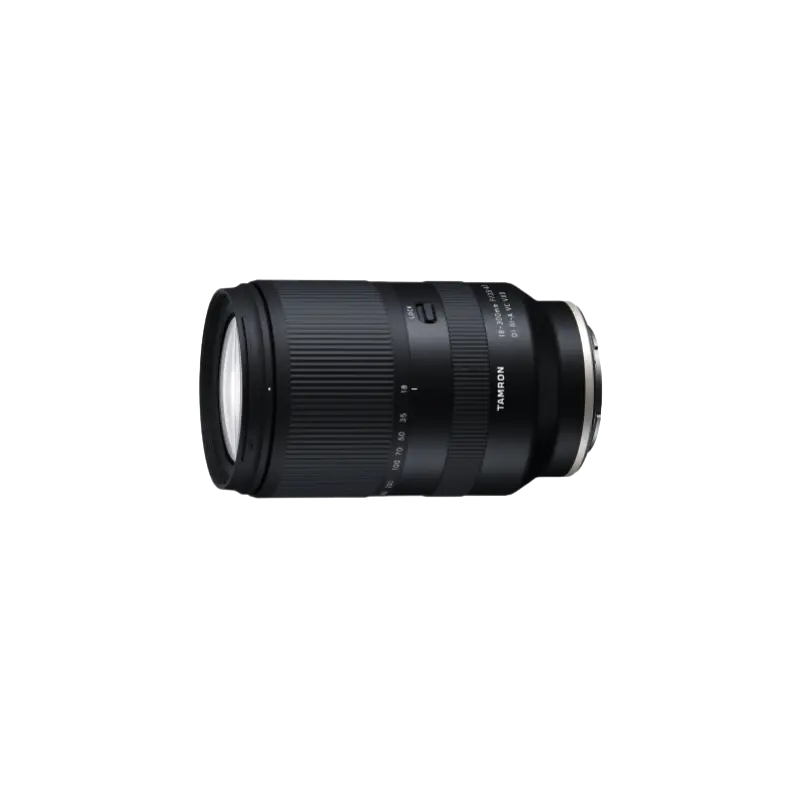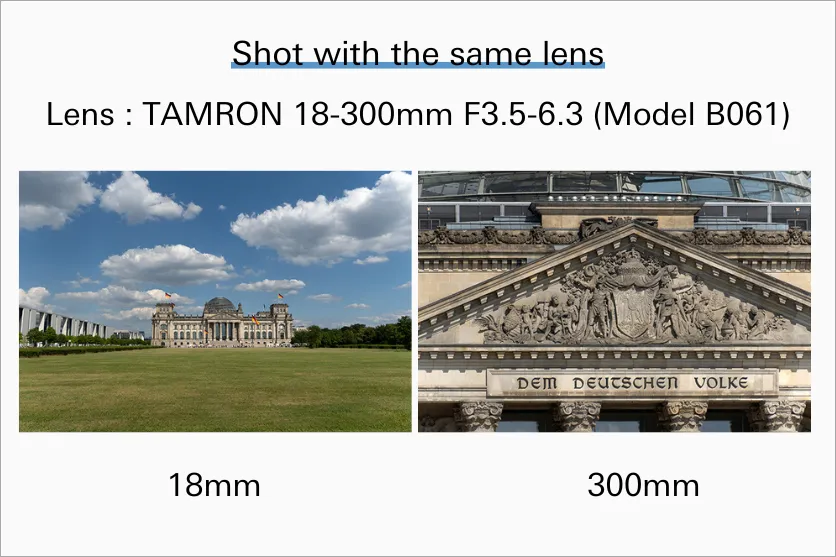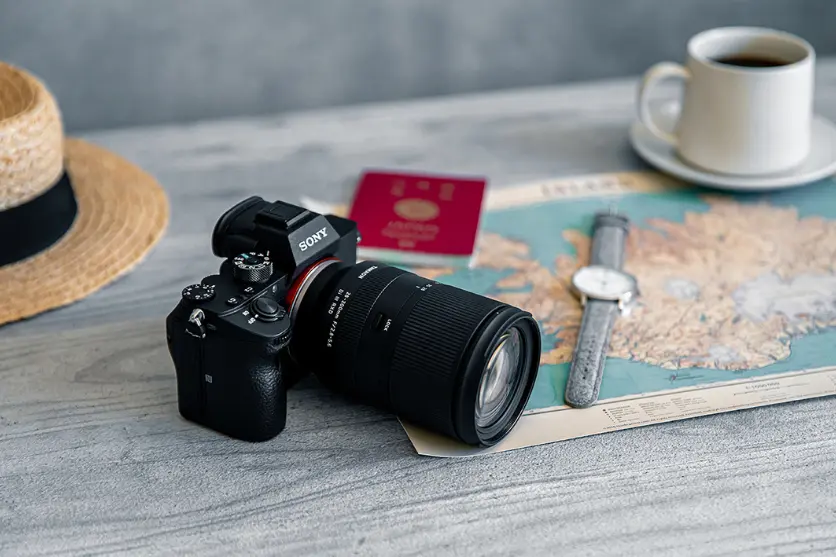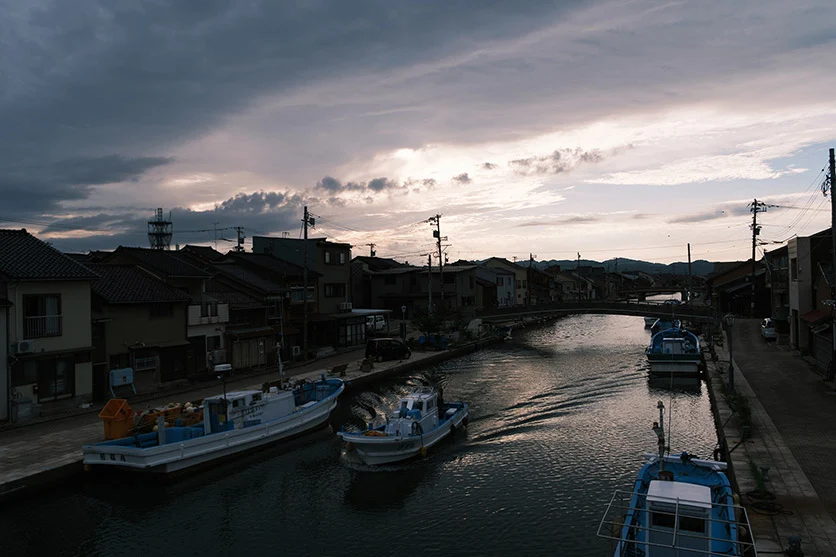October 18, 2024
What is an all-in-one zoom lens? Features and recommended shooting scenes!
What is an all-in-one zoom lens? Features and recommended shooting scenes!


If you want to easily enjoy shooting a variety of subjects with a single lens, consider an all-in-one zoom lens. All-in-one zoom lenses, which cover the entire range from wide-angle to telephoto, are versatile lenses that can be used in any shooting situation. This article will introduce the advantages of all-in-one zoom lenses, recommended shooting situations, and specific points to keep in mind when selecting a lens.
What is an all-in-one zoom lens?
An all-in-one zoom lens is a lens with a high zoom ratio. The zoom ratio is calculated as the ratio of the focal length at the telephoto end to the focal length at the wide-angle end. For example, a zoom lens with a 28mm focal length at the wide-angle end and a 200mm focal length at the telephoto end has a zoom ratio of 200÷28=7.14x.
All-in-one zoom lenses have a structure that allows the focal length to be freely changed to suit the shooting scene and subject, and are characterized by the fact that they allow a wide range of shooting from wide-angle to telephoto with a single lens.
All-in-One Zoom Lenses are Versatile Lenses! 4 Advantages
All-in-one zoom lenses, which cover the entire range from wide-angle to telephoto and can handle ultra-telephoto depending on the product, can be said to be versatile lenses. Here are four advantages of using all-in-one zoom lenses.
Advantage 1: Wide range of coverage from wide-angle to telephoto
As mentioned above, the major advantage of all-in-one zoom lenses is the wide angle of view they can cover. Normal zoom lenses are limited in the range of focal lengths that they can cover, such as “from wide-angle to standard” and “from standard to telephoto”. On the other hand, all-in-one zoom lenses can cover the entire range from wide-angle to telephoto, allowing you to shoot a wide range of scenes with a single lens.
The focal lengths that can be covered by all-in-one zoom lenses vary from product to product, but for example, the TAMRON 18-300mm F/3.5-6.3 Di III-A VC VXD (Model B061) for APS-C size has a focal length of 18mm to 300mm (zoom ratio 16.6x / 35mm format equivalent). It covers the entire range from wide-angle to ultra-telephoto with a single lens.
Advantage 2: Flexibility to handle a variety of shooting situations
Another advantage of all-in-one zoom lenses is that they can flexibly respond to various shooting scenes. While this is a point common to ordinary zoom lenses, all-in-one zoom lenses can be used to cover an even wider range of angles of view.
For example, when shooting landscapes, you can use a wide-angle lens to capture dynamic images of natural scenery, and then use a telephoto lens for close-ups of buildings and flowers in the next scene.
In addition, all-in-one zoom lenses do not require the hassle of changing lenses when switching from a wide-angle to a telephoto angle of view. This is also an advantage because it allows photographers to take pictures without missing shutter opportunities. Furthermore, a lens with a short minimum object distance enables close-up photography, which will further increase the variety of your photographic expression.
Advantage 3: No need to carry several lenses
Another advantage of all-in-one zoom lenses is that there is no need to carry multiple lenses. Without wide-angle lenses or telephoto lenses, a single all-in-one zoom lens can be used for everything from landscape photography to portrait photography and snapshots.
Carrying several lenses can be bulky, but an all-in-one zoom lens reduces the amount of luggage you need to carry. For example, you can enjoy a variety of photography with a single lens even when you want to travel or walk around town with a lightweight lens.
Advantage 4: Easy to use even for beginners
Another advantage of all-in-one zoom lenses is that they are easily accessible to beginners. For beginner photographers, having a complete lineup of wide-angle and telephoto lenses can be a psychological and financial hurdle. In addition, if you are not accustomed to handling lenses, you may take time to change lenses and miss a shutter opportunity.
On the other hand, if you have a single all-in-one zoom lens, you can take pictures of various subjects and angles of view without the need for many lenses. Since there is no need to change lenses, it will be easier to capture the decisive moment without missing it.
Recommended shooting situations with all-in-one zoom lenses
All-in-one zoom lenses are useful for taking pictures while carrying the lens for long periods of time, such as at athletic events and on trips. Here are three recommended shooting scenes using all-in-one zoom lenses.
1) Shooting an athletic event
An all-in-one zoom lens is one of the best lenses for photographing children's athletic events. A telephoto lens is necessary to photograph children from a distance at an athletic meet. On the other hand, there are scenes where you want to use a wide-angle or standard lens, such as photographing the scenery of the entire venue or lunch.
In this way, all-in-one zoom lenses can be used in a variety of situations. A single lens can fulfill multiple roles, such as using a telephoto lens to take pictures during competitions such as running races, and using a standard lens when you are with your children.
2) Shooting when traveling
All-in-one zoom lenses are also recommended for travel photography; having one lens with you will allow you to take a variety of photos, such as meals, table photos, beautiful cityscapes, and commemorative shots with friends and family on your trip.
Another advantage of all-in-one zoom lenses is that they reduce the amount of luggage you need to carry when traveling. Since there is no need to carry a telephoto lens and a wide-angle lens, respectively, it will be a reassuring companion for those who want to lighten their footwork when traveling.
3) Nature Landscape Photography
All-in-one zoom lenses are also ideal for shooting natural scenery. They can be used in many shooting situations, such as dynamic wide-angle shots of seascapes, mountains, and other natural scenery, or telephoto close-ups of distant flowers and trees.
Telephoto lenses can also take advantage of the blur and compression effects of telephoto lenses, making it easy to use background blur to enhance the main subject. Furthermore, there is no need to carry multiple lenses, making it possible to compactly pack for mountaineering or outdoor shooting when you want to move light.
4) Video recording with interchangeable-lens camera
In addition to photography, all-in-one zoom lenses are also useful for video shooting. When shooting video, it is necessary to frequently move the focus and pull the camera in and out of focus.
By using an all-in-one zoom lens, you can adjust the leaning and pulling without changing the shooting position, and add a sense of rhythm to the video. You will be able to easily shoot videos in a variety of situations, such as shooting an athletic event or vlogging.
Disadvantages of all-in-one zoom lenses and points to note
Even versatile all-in-one zoom lenses have a few areas where they are not good at. Here are three general points to keep in mind when using all-in-one zoom lenses.
1) Lens size tends to be large and heavy
The disadvantage of all-in-one zoom lenses in general is that the lenses tend to be large. All-in-one zoom lenses cover a wide range of subjects from wide-angle to telephoto, so the number of lenses and their internal structure are more complex. For this reason, it is recommended that you actually hold the camera and lens as a set in your hand to check the fit and weight.
2) Aperture F-number tends to be large
Another point to keep in mind with all-in-one zoom lenses is that they tend to have a large maximum aperture F-number. Due to the complexity of their structure, all-in-one zoom lenses tend to have a smaller aperture than single focal length lenses and normal zoom lenses. As a result, the maximum aperture F-number may be large, so care should be taken when using such lenses for shooting in dark places.
3) May not be suitable if you want to pursue resolution performance
Although all-in-one zoom lenses are sometimes said to have inferior image quality, they provide sufficiently high resolution for general use. Compared to ordinary zoom lenses and single focal length lenses, they can be said to offer comparable image quality.
However, when the resolution performance is pursued, differences may inevitably emerge in the depiction of details. Therefore, if you are particular about image quality for commercial photography or artwork creation, for example, you may want to consider a single focal length lens or a high-quality zoom lens as an option.
Features of TAMRON's all-in-one zoom lenses
TAMRON's all-in-one zoom lenses are packed with various technologies to overcome the general disadvantages mentioned above, and are characterized by being lightweight, compact, and offering high image quality. Here are five features of TAMRON's all-in-one zoom lenses.
Point 1: “Brightness” with a small maximum aperture F-number! Lens with excellent descriptive performance
The TAMRON 28-200mm F/2.8-5.6 Di III RXD (Model A071) has a high zoom ratio with a focal length of 28mm to 200mm and a very small maximum aperture of 2.8. The advantage of this lens is that it provides sufficient brightness even when the aperture is stopped down or the shutter speed is increased in dark environments.
The bright lens starting at F2.8 enables delicate expression in a wide range of shooting situations. This lens is ideal for photographers who want to take advantage of the convenience of all-in-one zoom lenses while also focusing on expression and descriptive performance that makes the most of bokeh.
Point 2: Light and compact! Size that can be easily carried out
Another feature of TAMRON all-in-one zoom lenses is their lightweight and compact design. By using advanced optical design technology, TAMRON has achieved the highest level of lightness and compactness for all-in-one zoom lenses.
For example, the TAMRON 18-300mm F/3.5-6.3 Di III-A VC VXD (Model B061) is 125.6mm long (for Sony) and weighs 620g, making it extremely portable. This lens is not bulky, making it ideal for travel and outdoor activities.
Point 3: High close-up shooting ability! Enjoy a wide variety of shooting
TAMRON all-in-one zoom lenses also feature high close-up shooting ability. While most all-in-one zoom lenses have long minimum object distances, the TAMRON 28-200mm F/2.8-5.6 Di III RXD (Model A071) has a minimum object distance of 0.19m at the 28mm wide-angle end and a maximum magnification ratio of 1:3.1.
The short minimum object distance allows you to get closer to your subject, so you will be able to capture the delicate details of flowers and insects, for example. The minimum object distance at the 200mm telephoto end is also short (0.8m), so you can enjoy a variety of close-up photographic expressions at both the wide-angle and telephoto ends.
Point 4: Covers wide-angle to ultra-telephoto
The TAMRON 18-300mm F/3.5-6.3 Di III-A VC VXD (Model B061) has one of the highest zoom ratios among all-in-one zoom lenses. The focal length is from 18mm to 300mm (equivalent to 27-450mm in 35mm format), and the zoom ratio is 16.6x. The extremely high zoom ratio allows the user to freely change the angle of view from wide-angle to ultra-telephoto. It is literally versatile for everything from landscape photography to photographing vehicles such as airplanes and trains, wildlife, and sports scenes.
Point 5: Equipped with high-performance AF! Never miss a shutter chance!
High AF (Auto Focus) performance is another feature of TAMRON's all-in-one zoom lenses. The high-speed, high-precision AF allows you to smoothly focus on the subject you are aiming at. For example, TAMRON all-in-one zoom lenses are recommended for sports and bird photography, where you need to quickly focus and track the subject.
Another feature of TAMRON lenses is their quiet AF operation. TAMRON lenses are ideal for wildlife, indoor shooting, video shooting, and other situations where the slightest movement noise is a concern.
An all-in-one zoom lens can be used for various types of photography!
All-in-one zoom lenses can cover a wide range of focal lengths from wide-angle to telephoto, making them suitable for a variety of shooting situations. They are useful as all-rounders for shooting everything from familiar snapshots to events such as athletic meets and travel photography of natural landscapes. TAMRON's all-in-one zoom lenses, in particular, combine lightweight and compactness with high image quality while maximizing the functionality of high-power magnification. If you are considering an all-in-one zoom lens in the future, please take a look at these lenses.

Lens Featured in this Impression
-

-
28-300mm F/4-7.1 Di III VC VXD a074(Model )
28-300mm F/4-7.1 Di III VC VXD (Model A074) is a compact and versatile all-in-one 10.7x zoom lens for Sony E-mount. The lens boasts class-leading high image quality, and is equipped with high-speed AF VXD and VC. Go from wide-angle to long telephoto in an instant and capture every moment of the world around you.
-

-
28-200mm F/2.8-5.6 Di III RXD a071(Model )
Tamron has distilled all the technical capabilities and know-how amassed over the last 28 years in its development of all-in-one zoom lenses into the creation of this 28-200mm F/2.8-5.6 Di III RXD (Model A071), designed exclusively. The lens has a large maximum aperture of F2.8 at 28mm wide end, which represents a world’s first* for all-in-one zoom lenses, and delivers high-level performance across the entire zoom range, from the 28mm wide-angle end to 200mm telephoto.
-

-
18-300mm F/3.5-6.3 Di III-A VC VXD b061(Model )
The 18-300mm F/3.5-6.3 Di III-A VC VXD (Model B061) achieves 16.6x zoom and is equipped with the VXD for a quiet and agile AF drive. The optical construction includes several special lens elements, specifically four LD (Low Dispersion) and three hybrid aspherical lens elements. These elements help to produce clear, sharp images from the center to the corners and deliver top-level image quality in its class. It is enabled close-up shooting and is equipped with the VC system. The 18-300mm F/3.5-6.3 makes photography more fun because you can use it in an unlimited number of situations. It’s so versatile, it will inspire you to push your creativity further and further.














